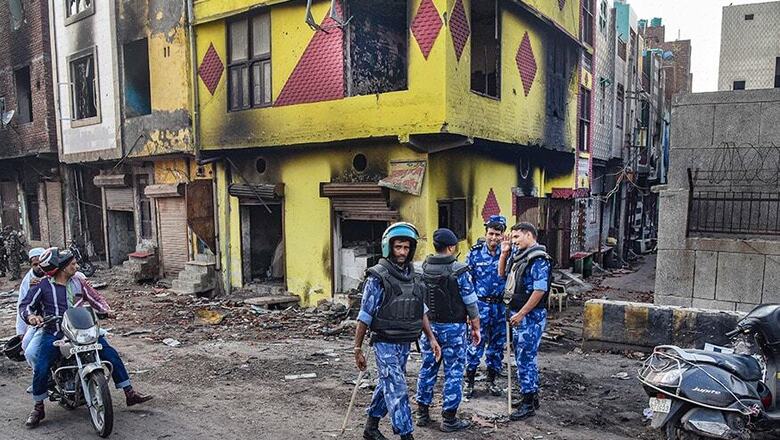
views
New Delhi: With death toll at 53, the communal violence in North East Delhi has now become one of the deadliest riots in the country in the last three decades since the 1992 countrywide clashes following Babri Masjid demolition.
According to the latest figures available, 44 people have been declared dead in GTB hospital, five in RML, three in LNJP hospital and one in Jag Pravesh Chandra hospital.
Sources in the police department say that 654 cases have been registered, 1820 people have been detained or arrested and 47 cases of Arms Act have been registered in various police stations.
Over 1000 people were killed in the 2002 riots in Gujarat, which some activists have referred to as the “Gujarat pogroms”. In 1992, after the Babri Masjid was demolished, riots broke out across the country, including Kolkata, Delhi, Kanpur, Surat, among others. Mumbai alone reported 1500 official deaths in communal riots.
The recent communal violence punctured decades-long harmony and sowed the seeds of mistrust, despair between the communities. Among those killed were sole breadwinners of their families, labourers, businessmen, civil service aspirants, autorickshaw drivers, marketing professionals and policemen.
Meanwhile, former AAP party member and councillor Tahir Hussain, accused in the murder of an IB official Ankit Sharma, surrendered in a court on Thursday.
On Thursday, the issue of Delhi riots caused disruption and ruckus in the Parliament, which led to the suspension of seven Congress MPs from the Lok Sabha for the rest of the session.
On February 25, in areas around Maujpur and Ghonda, shops had been set on fire, stones pelted and people were assaulted. A week later, News18 revisited the areas a week after the violence broke out to assess how people responded to the riots and what the victims had to say.
There remains palpable fear among those whose shops and houses had been vandalised and set afire. They were yet to open their shops even as the rest of markets lifted their shutters. There was also mistrust among their neighbouring shop owners, who claimed they did not know even the identities of the people who ran the shops that were destroyed.



















Comments
0 comment